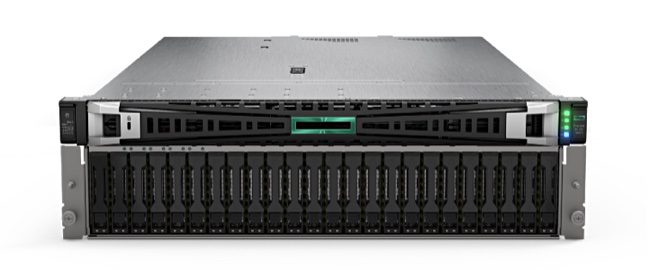- HPE unveils the Cray Storage Systems C500, a cost-effective storage solution for entry-level and mid-range HPC and AI compute clusters.
- The C500 leverages a parallel architecture with SSDs and HDDs, powered by Lustre file system software, offering scalability from 60 TB to petabytes.
- Designed for modeling, simulation, and AI workloads, it provides high-speed performance with up to 1.6 TBps and 50 million IOPS/rack.
- The C500 aims to democratize access to high-performance storage technologies, delivering leadership-class capabilities at a fraction of the entry price.
- HPE is committed to ongoing software improvements and enhancements to simplify deployment and management of the C500.
Main AI News:
In its latest move, HPE unveils a cost-effective storage system tailored for entry-level and mid-range HPC and AI compute clusters, marking a significant stride in democratizing high-performance computing technologies.
Dubbed the Cray Storage Systems C500, this innovation represents a scaled-down iteration of the renowned ClusterStor line, inherited by HPE through its acquisition of Cray in 2019. Designed to cater to the burgeoning demand for robust storage solutions in the HPC and AI sectors, the C500 promises to deliver unparalleled performance and scalability at a fraction of the cost typically associated with such cutting-edge technologies.
Ulrich Plechschmidt, HPE’s Product Marketing lead for parallel HPC and AI storage, asserts that the C500 is poised to redefine industry standards by offering “leadership-class storage technologies at a fraction of the entry-price point and with increased ease-of-use.” With a focus on enhancing accessibility without compromising on quality, Plechschmidt underscores the C500’s potential to empower a diverse range of users, from burgeoning startups to established enterprises, with the tools needed to drive innovation and accelerate research and development efforts.
Built upon the foundation laid by its predecessor, the XE E1000 model, the Cray Storage Systems C500 boasts an array of features tailored to meet the evolving needs of today’s data-driven landscape. Leveraging a parallel architecture that harnesses the combined power of SSDs and HDDs, coupled with Lustre file system software, the C500 offers unmatched flexibility and performance scalability, making it an ideal choice for organizations looking to future-proof their infrastructure investments.
At its core, the C500 is engineered to deliver exceptional performance across a wide spectrum of workloads, ranging from modeling and simulation to AI and machine learning. By harnessing the combined power of cutting-edge hardware and intelligent software solutions, HPE aims to empower its customers to unlock new insights, drive innovation, and gain a competitive edge in an increasingly data-centric world.
Looking ahead, HPE remains committed to pushing the boundaries of what’s possible in the realm of high-performance computing and AI, with a steadfast focus on delivering innovative solutions that empower organizations to thrive in the digital age. As Plechschmidt aptly summarizes, “With the Cray Storage Systems C500, the future of HPC and AI storage has never looked brighter.”
Conclusion:
The introduction of HPE’s Cray Storage Systems C500 marks a significant development in the HPC and AI storage market. By offering cutting-edge performance and scalability at a more accessible price point, HPE is poised to disrupt the market landscape, empowering organizations of all sizes to leverage advanced storage technologies to drive innovation and gain a competitive edge. This move underscores the increasing democratization of high-performance computing, paving the way for broader adoption and accelerated growth in the industry.

